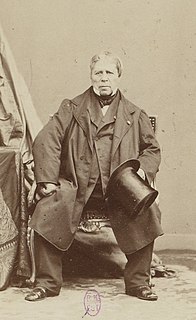
Jean-Auguste-Dominique Ingres was a French Neoclassical painter. Ingres was profoundly influenced by past artistic traditions and aspired to become the guardian of academic orthodoxy against the ascendant Romantic style. Although he considered himself a painter of history in the tradition of Nicolas Poussin and Jacques-Louis David, it is his portraits, both painted and drawn, that are recognized as his greatest legacy. His expressive distortions of form and space made him an important precursor of modern art, influencing Picasso, Matisse and other modernists.
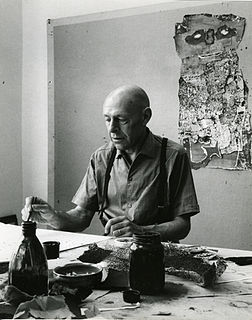
Jean Philippe Arthur Dubuffet was a French painter and sculptor. His idealistic approach to aesthetics embraced so-called "low art" and eschewed traditional standards of beauty in favor of what he believed to be a more authentic and humanistic approach to image-making. He is perhaps best known for founding the art movement art brut, and for the collection of works—Collection de l'art brut—that this movement spawned. Dubuffet enjoyed a prolific art career, both in France and in America, and was featured in many exhibitions throughout his lifetime.

Philippe de Champaigne was a Brabançon-born French Baroque era painter, a major exponent of the French school. He was a founding member of the Académie de peinture et de sculpture in Paris, the premier art institution in France in the eighteenth century.
Events from the year 1868 in art.

Charles Auguste Émile Durand, known as Carolus-Duran, was a French painter and art instructor. He is noted for his stylish depictions of members of high society in Third Republic France.

Musée Marmottan Monet features over three hundred Impressionist and Post-Impressionist paintings by Claude Monet, including his 1872 Impression, Sunrise.

Louis-Jean-François Lagrenée was a French rococo painter and student of Carle van Loo. He won the Grand Prix de Rome for painting in 1749 and was elected a member of the Académie royale de peinture et de sculpture in 1755. His younger brother Jean-Jacques Lagrenée was also a painter.
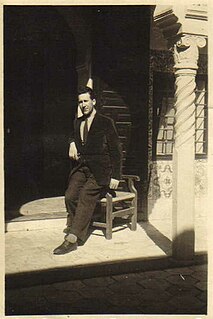
Maurice Boitel was a French painter.

Joseph, Baron Ducreux was a French noble, portrait painter, pastelist, miniaturist, and engraver, who was a successful portraitist at the court of Louis XVI of France, and resumed his career at the conclusion of the French Revolution. He was made a baron and premier peintre de la reine, and drew the last portrait ever made of Louis XVI before the king's execution. His less formal portraits reflect his fascination with physiognomy and show an interest in expanding the range of facial expressions beyond those of conventional portraiture.

Jean-Marc Bustamante is a French artist, painter, sculptor and photographer. He is a noted conceptual and installation artist and has incorporated ornamental design and architectural space in his works.

Louis Kronberg (1872–1965) was an American figure painter, art dealer, advisor, and teacher. Among his best-known works are Behind the Footlights and The Pink Sash.

Jean-Baptiste Oudry was a French Rococo painter, engraver, and tapestry designer. He is particularly well known for his naturalistic pictures of animals and his hunt pieces depicting game.

Joseph-Siffred Duplessis was a French painter known for the clarity and immediacy of his portraits.

Alexandre-Louis Leloir was a French painter specializing in genre and history paintings.
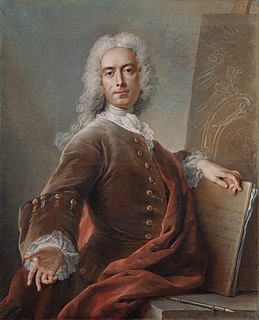
Charles-Antoine Coypel was a French painter, art commentator, and playwright. He became court painter to the French king and director of the Académie Royale. He inherited the title of Garde des tableaux et dessins du roi, a function which combined the role of director and curator of the king's art collection. He was mainly active in Paris.
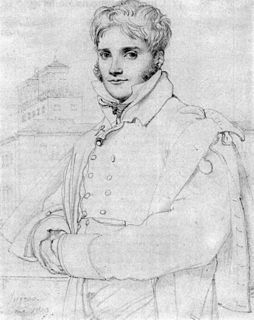
Merry-Joseph Blondel was a French history painter of the Neoclassical school. He was a winner of the prestigious Prix de Rome in 1803. After the salon of 1824, he was bestowed with the rank of Knight in the order of the Legion d'Honneur by Charles X of France and offered a professorship at the École nationale supérieure des Beaux-Arts: a position in which he remained until his death in 1853. In 1832, he was elected to a seat at the Académie des Beaux-Arts in Paris.

Louis Valtat was a French painter and printmaker associated with the Fauves, who first exhibited together in 1905 at the Salon d'Automne. He is noted as a key figure in the stylistic transition in painting from Monet to Matisse.

Alexis Grimou, also Grimoult or Grimoux (1678–1733) was a French portrait painter. He worked for an elite clientele and was called the French Rembrandt as he introduced the Northern European style of portrait painting in France. Many of his intimate portraits at half-lengths were influential on the development of 18th-century portrait painting in France. Portrait painters such as Jean-Honoré Fragonard and Jean-Baptiste Greuze were influenced by his work.
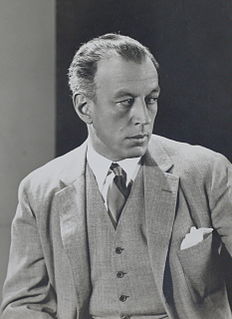
Bernard Boutet de Monvel was a French painter, sculptor, engraver, fashion illustrator and interior decorator. Although first known for his etchings, he earned notability for his paintings, especially his geometric paintings from the 1900s and his Moroccan paintings made during World War I. In both Europe and the United States, where he often traveled, he also became known as a portrait painter for high society clients.
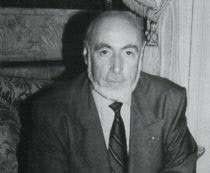
Jean-Claude Chauray also known as J.C. Chauray, was a 20th-century French painter best known for still lifes. He grew up in Mauzé-sur-le Mignon, south-west of France.




















